Jinling Maple Leaf, Longcheng culture, Gusu garden, into the Jiangsu three places Ningchangsu unique charm
The first stop in Nanjing is catching up with the best viewing period of Nanjing Qixia Mountain red maple, to the south to enjoy the maple, of course, must be to Nanjing Qixia Mountain. Every autumn, Qixia Mountain is full of red maple, and the best time to enjoy the maple is from late November to December, miss you will have to wait for another year.


Qixia Mountain is known as the first bright mountain in Jinling, and Qixia Jing House is built in the mountain in the Southern Dynasty, so it is named Qixia Mountain. "A Qixia mountain, half of the history of Jinling", you can imagine how important Qixia Mountain is in Nanjing. Autumn red maple is the most attractive place in Qixia Mountain, taking advantage of the late autumn and early winter, come to Nanjing to enjoy the colorful and romantic Qixia red Maple season, "maple" love thousands of people yearn for today, ancient buildings and maple leaves especially match! The colorful Qixia Mountain, the beauty of the whole Jinling City, also an endless stream of tourists, have stopped to enjoy taking photos.


Qixia Mountain scenic spot is larger, the famous scenic spots have Qixia Temple, pagoda, thousand Buddha Rock, red leaf Valley, etc., each place of the maple leaf has its own characteristics, so to reasonably arrange the viewing time, it is recommended to enter the mountain at 9 o 'clock in the morning, because there are many tourists on the mountain after 10 o 'clock. There are also many kinds of red leaves in Qixia Mountain, mainly maple, including red maple, rooster's foot maple, triangle maple, feather maple, beech tree, Chinese pistacia, etc., scattered and layered.




Spring Niuhead, autumn Qixia and the most beautiful scenery of Qixia Mountain in a year are all concentrated in the autumn season. Compared with the other three seasons in spring, summer and winter, Qixia Mountain is more attractive at this moment. People who like to enjoy maple trees should pay close attention to this time period and come to Qixia Mountain to see the maple leaves. Put a few shapes under the maple tree, it is a large piece of land.



Along the main road go straight ahead will be able to reach the mirror Lake, an area of about 3000 square meters, is built in the Qing Qianlong period, the lake has the pavilion, there are nine Bridges connected to the shore, exquisite shape, there is a "rainbow mirror" monument standing on the lake, through the mirror, came to Qixia Temple.

Like the combination of ancient buildings and red maple, you can enjoy Qixia Temple. Qixia Temple has a long history, grand scale and extraordinary style. It is one of the four famous temples in China and one of the ancestral courts of the three Buddhist schools, and has an important position in the Buddhist field. In addition to the red maple in Qixia Temple, two huge ginkgo trees are the most famous. At this moment, ginkgo biloba is the most yellow time, dotted on both sides of the temple, which adds a lot of poetry.


The red maple at the foot of Qixia Mountain is the most beautiful, so it has become the best place in many people's hearts to enjoy and shoot maple leaves. The red maple, like the sunset sunset, has a strong autumn sense and is spectacular, so if it is mainly for shooting, the red maple landscape at the foot of the mountain is enough for you to shoot for a day.



There is also a Fenglin Lake on Qixia Mountain, which is located in the southwest of Fengxiang Peak, the highest peak of Qixia Mountain. The elevation here is about 200 meters, because the altitude is higher, the red leaves turn red earlier. There is a red maple tree in the lake, whose red leaves are much thicker than those below the mountain. The water reflects the red maple on the lake, and the colorful scenery is like an oil painting.
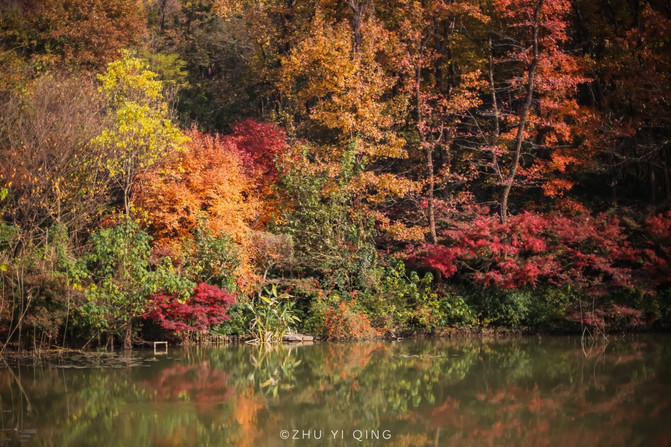
Walking into the mountain forest area, you can also enjoy the gorgeous colors of red maple trees on both sides of the wooden plank road, and the road winds through the fiery red maple forest. Deep into Qixia Mountain, the leaves in front of you are all dyed, light yellow, yellow red, orange red, bright red, purple... A tree like sparks like fire maple leaves, dotted the whole Qixia Mountain scenery.




In Nanjing, there is a net red card bookstore, that is the Avant-garde bookstore, but this time we are going to the Avant-garde bookstore located in the Nanjing Garden Expo Garden. This bookstore is a very unique shape, is a concrete cylinder, its source is also a story, at that time in the construction of Nanjing Garden Expo Park, all destroyed buildings have to be restored, including the old cement factory complex, so these ten cement cylinders have a new name: Avant-garde bookstore.

As the pioneer store's motto: "Strangers on the earth", full of life in the universe of the vast sense.

Walking inside the bookstore, I was stunned by the exquisite spiral staircase.

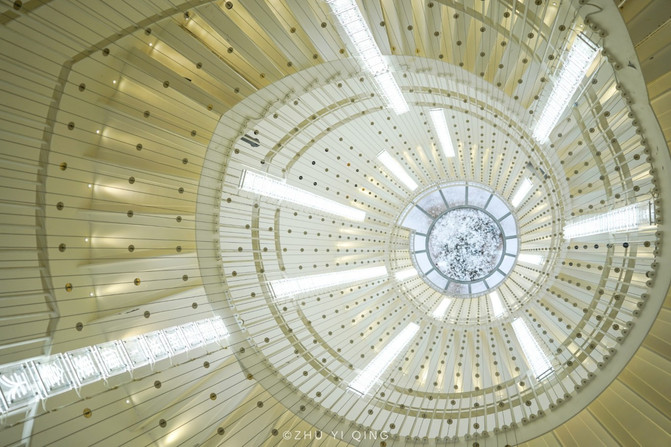
Stacks of books rotate upward, forming a beautiful picture, this Internet celebrity book wall is also worth punching a photo.
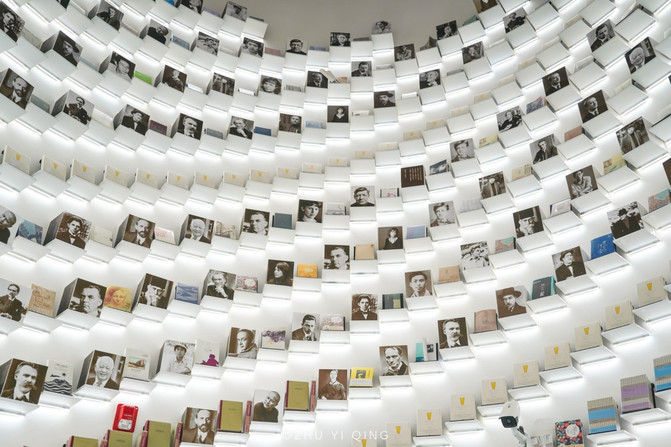
Dragon City Changzhou is a very historical and cultural heritage of the place, into Changzhou, to feel the thousands of years of Longcheng, literati left a variety of marks.

The first stop came to Qingguo Lane in the old city of Changzhou, which was called Qianguo Lane in ancient times, one of the old streets in Changzhou, and has the reputation of the first lane of Jiangnan famous people.
The 400-meter alley is full of the elegance and poetry of the old city of Changzhou. The entire ancient alley is scattered with various ancient architectural communities of Ming, Qing and Republic of China, hundreds of former residences of celebrities with different styles, and strong architectural styles of Ming and Qing dynasties. It is quiet and quiet, very emotional, and you can taste Changzhou local food.


A Qingguo lane, half of the history of the dragon city, here is the land of Changzhou culture, the literary style of the Tang Dynasty, the family of hair and strings live together, the book full lane, the ink floating river, the bridge where the water, all reveal the deep connotation of Changzhou.
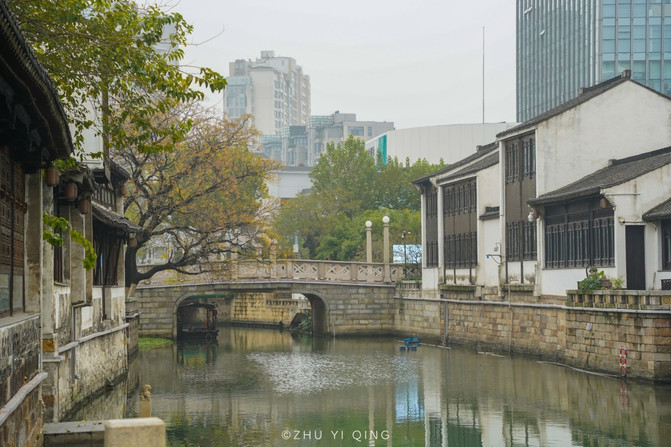


White walls and black tiles, red lanterns and green willow branches, and simple green fruit alleys record the development and prosperity of antique Changzhou, but only here has not undergone special changes, or maintain the previous style.
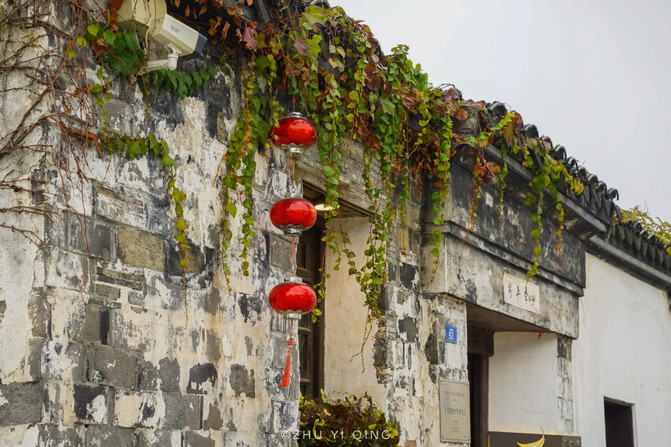

The old street is also beaming with a new look, the net red card coffee bar has added more young vitality to Qingguo Lane, and the big two paper cup sculptures have also become the favorite card place for young people.


Changzhou intangible food shrimp cake is also the characteristics of Qingguo Lane, far away to smell the aroma, must come to have a taste.

Former residence of Su Dongpo
Changzhou is one of Mr. Su Dongpo's favorite cities. He arrived in Changzhou 11 times and died there. In order to commemorate Mr. Su Dongpo, the memorial hall of Su Dongpo was built on the place where he once docked by boat.


Su Dongpo Memorial Hall has always followed three principles in the construction process: First, respect for history, protect cultural relics as much as possible, do not knock a nail, do not move a brick, to ensure the complete style of ancient buildings. Second, the style is solemn, all the exhibition is in accordance with the Song Dynasty Jiangnan style, the color is light and elegant, the space is simple and square. Third, it is rich in connotation. Through the exquisite garden design, it highlights the key points and unfolds gradually, completely showing Mr. Dongpo's glorious life and Changzhou love.
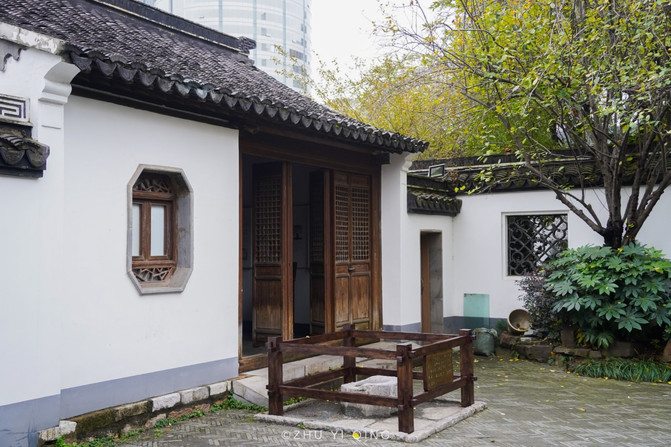
Thank you for the residual lights do not hate guests, lonely boat night Xu, the way to do Su Dongpo and Changzhou love.


🌟 Grate Lane
Since ancient times, Changzhou has been famous for the production of a grate and a wooden comb, known as the palace comb and the reputation of Changzhou comb in the world, and the entire street and every household here are to make a living by the comb, one of the eight scenes in Changzhou, the grate beam lights tell the prosperity of this street.


At the entrance of Biggie Street, you can see a tall archway with the inscription "Grand Quay", which, as the name suggests, is the location of the port.

Walking into the grate shop on the street, I can see a wide range of exquisite workmanship, but also let me know a lot about this often used things.

Come to Changzhou, the most can not miss is the fish head of Taihu Lake, came to the Tianmu Lake hotel, taste the most authentic Tianmu Lake big fish head, fish head soup thick as milk, fragrance, just put up to smell the fish head.


Nowadays, Tianmu Lake casserole fish head has not only become a business card of Changzhou cuisine, but also one of the top ten dishes of Jiangsu cuisine, and drinking fish head soup in Tianmu Lake has become a "must-punch" link in Changzhou tourism.

In Changzhou, there is another century-old company that must come to have a taste, that is, Changzhou Detaiheng. This is a hundred years of history of the old shop, the environment is very antique, here, you can eat enough Changzhou ten delicious.

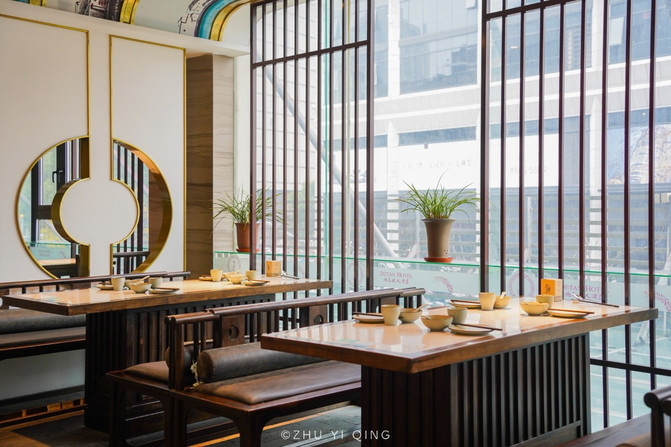
Eight immortals Fu Lu rice is auspicious eight treasure rice, sweet and not greasy.

Qianlong greasy crab paste, Xiao Zi net oil roll, are behind the dishes with allusions, especially this crab paste, very fresh and delicious.

You can also eat fresh fried shrimps, small sesame cake, pig trotters, lotus hearts, are the most authentic Changzhou food, worth a time to punch.

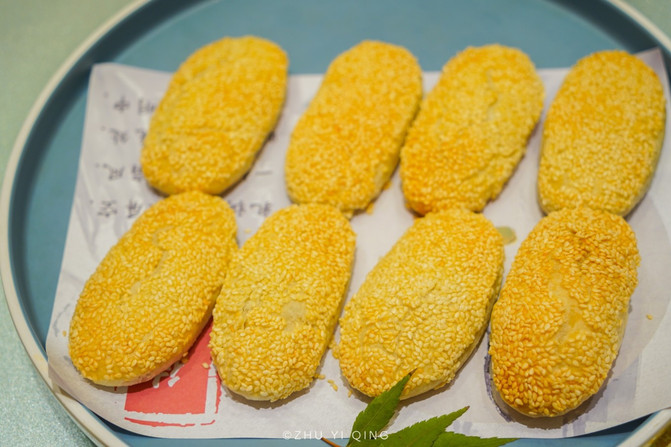

When I met Gusu City again, I always felt that Suzhou was a place where I could not get tired of shooting.
And pillow dream Gusu's first stop, is to come to that I am familiar with the dream Zhouzhuang.

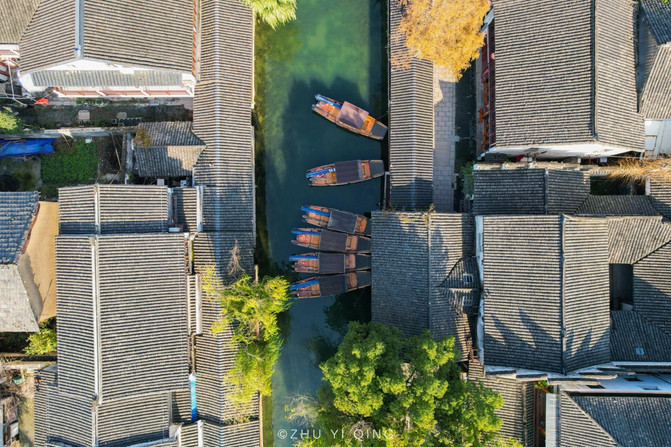
Zhouzhuang
One of the six ancient towns in Jiangnan, the dream of small bridge flowing water town, whether it is day or night, has a unique charm.

Speaking of the ancient town of Jiangnan in China, many people may first react to Zhouzhuang, which is known as the first water town in China, and is one of the six ancient towns in Jiangnan. Zhouzhuang has a very long history, with typical Jiangnan water town style, coupled with its unique cultural landscape, has become the treasure of Chinese water town culture and Wu local culture.


Today's Zhouzhuang still retains very good architecture of the Ming and Qing dynasties, only 0.47 square kilometers of the ancient town has nearly 100 classical houses and more than 60 brick carved gatehouses, enough to show how prosperous Zhouzhuang was. Once Zhouzhuang, is also a very developed business contacts in the ancient town, the status in the south and the current Shanghai, so Zhouzhuang also gave birth to a lot of celebrities, the most famous of which is the richest man Shen Wansan.


Zhouzhuang at night is really beautiful, all kinds of lanterns lit up, as if ahead of the year, Zhouzhuang during the day is pure and natural, that night Zhouzhuang is blurred full of charm.


When the modern lights and the ancient scenery are integrated, the ancient and modern interlace sense of each other. It's a novelty.

You to see Gusu, people do pillow river, south Ke a dream, night Zhouzhuang.


The plumes of lights and OARS in the night of Zhouzhuang reminded me of that poem: "When the night is little, OARS are the sound and shadow of lamps." After nightfall of Zhouzhuang, alley and light and shadow to each other, beautiful Jiangnan dim shadows, encounter my fair beauty.



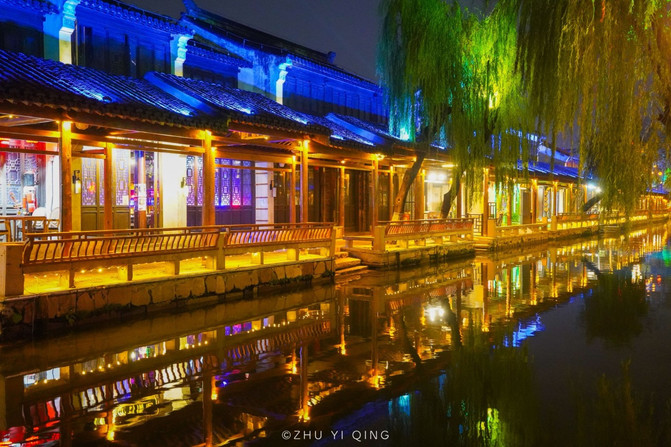

Suzhou Museum
The works of master architect I.M. Pei are full of Zen Chinese style and ink style, and the collections inside are even more eye-opening.

Suzhou Museum is the most complete historical building of the Taiping Heavenly Kingdom, with 41109 pieces of cultural relics. It is also a local comprehensive historical museum.

For many people, coming to Subo to see cultural relics is secondary, more to appreciate the beauty of its architecture. There are both the classical Chinese style of the Taiping Heavenly Kingdom Palace, and the landscape of the ink garden in the south of the Yangtze River. Every little detail reflects the beauty of ingenuity.

Taking photos in Subo has become the first priority over seeing the exhibition, because it is really too beautiful, look at the building reflected in the pool, the minimalist lines outline a different landscape, like an ink painting.


The Humble Administrator's Garden
The world cultural heritage, the representative of the classical gardens of Jiangnan and the precious heritage of Chinese garden art, the undulation of the corridor, the reflection of the waves, the unique interest, the gorgeous decoration, the Humble Administrator's Garden of Suzhou should be seen.


The Humble Administrator's Garden at the end of autumn and early winter is also very beautiful, the Humble Administrator's Garden is colorful, and a shot is a Jiangnan beauty.


Humble Administrator's Garden is a typical Chinese garden. This garden has a long history. It is said that it has a history of more than 500 years. The Humble Administrator's Garden has always been a popular attraction in Suzhou, and it was also the residence of Jin Dynasty writer Pan Yue.

The Humble Administrator's Garden is narrow in the north and south, long in the east and the west, the garden has mountains and water, reflecting the style of Jiangnan water town, all kinds of buildings are built in the water, scattered, quite charming. The essential parts include Orchid Snow Hall, Yuanxiang Hall, and small flying Rainbow of covered Bridge.

Humble Administrator's Garden is an ancient garden that fully reflects the charm of Jiangnan gardens. One of the characteristics of this garden is that water plants, lotus flowers, fish, etc. grow in the same garden through a variety of aquatic plant breeding control methods, and form a part of the garden landscape, balancing the ecology of the whole garden. In the distribution of East Garden, Middle Garden and West Garden, the pool in the center of the central plains is the main, and the pavilions are built along the water.
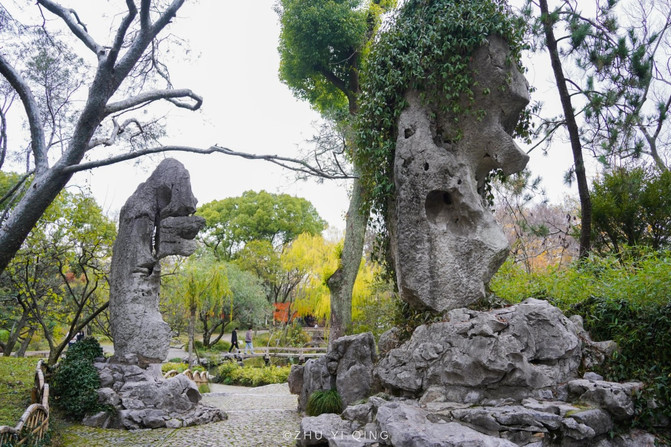

In the Humble Administrator's Garden, plants are also very elegant, there are water hibong, bamboo, willow, lotus, citrus, bamboo, etc., these plants in turn distributed in various scenic spots, we can go around the whole garden to see these characteristics of the scenery, especially suitable for taking photos. The whole Humble Administrator's Garden is surrounded by water as the center of the landscape, showing the beauty of the floor.

The Humble Administrator's Garden has strong characteristics of Jiangnan water town, which can be reflected in the Wells of the Humble Administrator's Garden. Through the natural stream pool to create a narrow and connected water surface, so that the whole garden is connected, and it is more convenient to visit.


Wangyan Hot spring
Winter is coming, of course, but also to soak in a hot spring, and not only to soak in hot springs but also to look at the beauty of the bubble, Wang Yan hot spring beside the Taihu Lake is an excellent bubble.

In the net red infinity bubble pool to see the Taihu Lake, enjoy the winter warm happiness.


Wangyan Hot spring focuses on outdoor hot springs, and more than 40 outdoor hot spring pools are distributed in the gardens "as if they were natural and integrated with nature", achieving a grand aesthetic view of Oriental garden hot springs that integrates nature and man.

Hot spring to "Songling eight sceneries" one of the Longqiu Gan Quan is located as the source point, derived another ten kinds of different effects of health soup pool, with the combination of Chinese and Western ecological health treatment spa, in the warm spring meaning, steal a floating life day leisure.

Suzhou cuisine
In Zhouzhuang must not miss the food of Wansan hoof, originated in the Ming Dynasty Shen Wansan family, is used to entertain guests of essential dishes, fragrant and delicious, salty with sweet, fat and not greasy.

And come to Suzhou, also must taste Su style noodles, the characteristics of crab roe noodles and three shrimp noodles, especially the crab roe noodles is the most special, crab roe noodles originated in Suzhou, the original crab roe noodles are sweet. The crab roe topping is fragrant and dazzling, and the golden crab roe is served in a whole bowl. Each noodle is coated with the aroma of crab, and it is just irresistible.


Previous Article:Pretend to take a vacation on a cruise ship on Suzhou's Jinji Lake
Next Article:Into the two-sided Suzhou, 2 days 1 night can also be a deep tour, I and Suzhou distance is only 20 minutes
